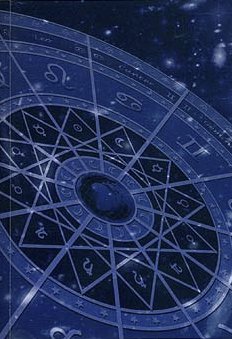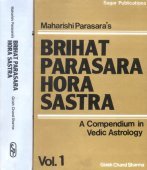Mahadasha, Maha-Dasha, Mahādaśā, Mahadāśā, Mahat-asha: 7 definitions
Introduction:
Mahadasha means something in Hinduism, Sanskrit, Marathi. If you want to know the exact meaning, history, etymology or English translation of this term then check out the descriptions on this page. Add your comment or reference to a book if you want to contribute to this summary article.
The Sanskrit terms Mahādaśā and Mahadāśā can be transliterated into English as Mahadasa or Mahadasha, using the IAST transliteration scheme (?).
In Hinduism
Jyotisha (astronomy and astrology)
Source: WikiPedia: Hindu AstrologyMahādaśā (महादशा):—The first Mahā-Daśā is determined by the position of the natal Moon in a given Nakṣatra. The lord of the Nakṣatra governs the Daśā. Each Mahā-Dāśā is divided into sub-periods called bhuktis, or antar-daśās, which are proportional divisions of the maha-dasa. Further proportional sub-divisions can be made (but error margin based on accuracy of the birth-time grows exponentially). The next sub-division is called pratyantar-daśā, which can in turn be divided into sookshma-antardasa, which can in turn be divided into praana-antardaśā, which can be sub-divided into deha-antardaśā. Such sub-divisions also exist in all other Daśā systems, some of which have been named above.

Jyotisha (ज्योतिष, jyotiṣa or jyotish) refers to ‘astronomy’ or “Vedic astrology” and represents the fifth of the six Vedangas (additional sciences to be studied along with the Vedas). Jyotisha concerns itself with the study and prediction of the movements of celestial bodies, in order to calculate the auspicious time for rituals and ceremonies.
Languages of India and abroad
Marathi-English dictionary
Source: DDSA: The Molesworth Marathi and English Dictionarymahādaśā (महादशा).—f (S In casting a horoscope.) The rule or sway of the predominant planet, qualified or modified by the antardaśā the several influences of the minor planets.
Marathi is an Indo-European language having over 70 million native speakers people in (predominantly) Maharashtra India. Marathi, like many other Indo-Aryan languages, evolved from early forms of Prakrit, which itself is a subset of Sanskrit, one of the most ancient languages of the world.
Sanskrit dictionary
Source: DDSA: The practical Sanskrit-English dictionaryMahadāśā (महदाशा).—a high hope; महदाशापूर्णमानसः (mahadāśāpūrṇamānasaḥ) Daśakumāracarita 1.3.
Mahadāśā is a Sanskrit compound consisting of the terms mahat and āśā (आशा).
--- OR ---
Mahādaśā (महादशा).—the influence exercised (over a man's destiny) by a predominant planet.
Mahādaśā is a Sanskrit compound consisting of the terms mahā and daśā (दशा).
Source: Cologne Digital Sanskrit Dictionaries: Shabda-Sagara Sanskrit-English DictionaryMahādaśa (महादश).—f.
(-śāṃ) The influence of a predominent planet.
Source: Cologne Digital Sanskrit Dictionaries: Monier-Williams Sanskrit-English Dictionary1) Mahadāśā (महदाशा):—[=mahad-āśā] [from mahad > mah] f. great expectation, high hope, [Daśakumāra-carita]
2) Mahādaśā (महादशा):—[=mahā-daśā] [from mahā > mah] f. the influence of a predominant planet, [Monier-Williams’ Sanskrit-English Dictionary]
[Sanskrit to German]
Sanskrit, also spelled संस्कृतम् (saṃskṛtam), is an ancient language of India commonly seen as the grandmother of the Indo-European language family (even English!). Closely allied with Prakrit and Pali, Sanskrit is more exhaustive in both grammar and terms and has the most extensive collection of literature in the world, greatly surpassing its sister-languages Greek and Latin.
See also (Relevant definitions)
Partial matches: Asha, Dasa, Mahat, Mahad, Maha, Aca, Taca.
Full-text: Antardasha, Makatacai, Dasa.
Relevant text
Search found 1 books and stories containing Mahadasha, Mahā-daśā, Maha-dasa, Maha-dasha, Mahad-āśā, Mahad-asa, Mahad-asha, Mahādaśā, Mahadasa, Mahadāśā, Mahādaśa, Mahat-āśā, Mahat-asa, Mahat-asha; (plurals include: Mahadashas, daśās, dasas, dashas, āśās, asas, ashas, Mahādaśās, Mahadasas, Mahadāśās, Mahādaśas). You can also click to the full overview containing English textual excerpts. Below are direct links for the most relevant articles:
Significance of the Moon in Ancient Civilizations (by Radhakrishnan. P)
3. Horoscope Chart of Ramakrishnan < [Chapter 14 - Case Studies of Natal Chart]
4. Horoscope Analsys (Walking Abnormalities) < [Chapter 14 - Case Studies of Natal Chart]
Related products
